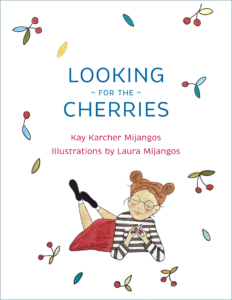Author Kay Karcher Mijangos will sign copies of her new children’s book, “Looking for the Cherries.\" She will be joined by illustrator Laura Mijangos-Rapp.
The late Alberto Mijangos, the beloved and widely collected San Antonio artist, teacher, and longtime promoter of Mexican culture, inspired the children’s book, “Looking For The Cherries,” published by Material Media Press.
Told through the eyes of Alberto’s fictitious granddaughter, Frankie, “Looking For The Cherries” is ... view more »
Author Kay Karcher Mijangos will sign copies of her new children’s book, “Looking for the Cherries.\” She will be joined by illustrator Laura Mijangos-Rapp.
The late Alberto Mijangos, the beloved and widely collected San Antonio artist, teacher, and longtime promoter of Mexican culture, inspired the children’s book, “Looking For The Cherries,” published by Material Media Press.
Told through the eyes of Alberto’s fictitious granddaughter, Frankie, “Looking For The Cherries” is authored by his second wife, Kay Karcher Mijangos, with illustrations by his daughter, Laura Mijangos-Rapp. “I wrote this book to spread Alberto’s wisdom about how to live a meaningful life.\”
Born in Mexico City, Alberto Mijangos felt the pull of art from a young age and, as a boy, watched Diego Rivera work on one of his epic murals. He attended art school until, at the age of 16, his mother died. When he and his father could not live peacefully together, Alberto sought a new life in the United States. With $6 to his name, he made his way to the Texas border and Chicago.
After moving to San Antonio, he landed a job as a window dresser for a major department store. In 1959, he was named director of the Mexican Consulate’s Art Gallery. After Hemisfair ’68, Alberto was instrumental in transitioning the Mexico Pavilion to the Mexican Cultural Institute, where he created an important cultural exchange between the United States and Mexico, organizing major exhibits of Mexican art, music, and dance in San Antonio.
In 1979, Alberto began painting again and pursued his dream of being a full-time artist until his death in 2007. In 1996, he opened the Salon Mijangos, where students and other artists painted and learned alongside him.
View less



